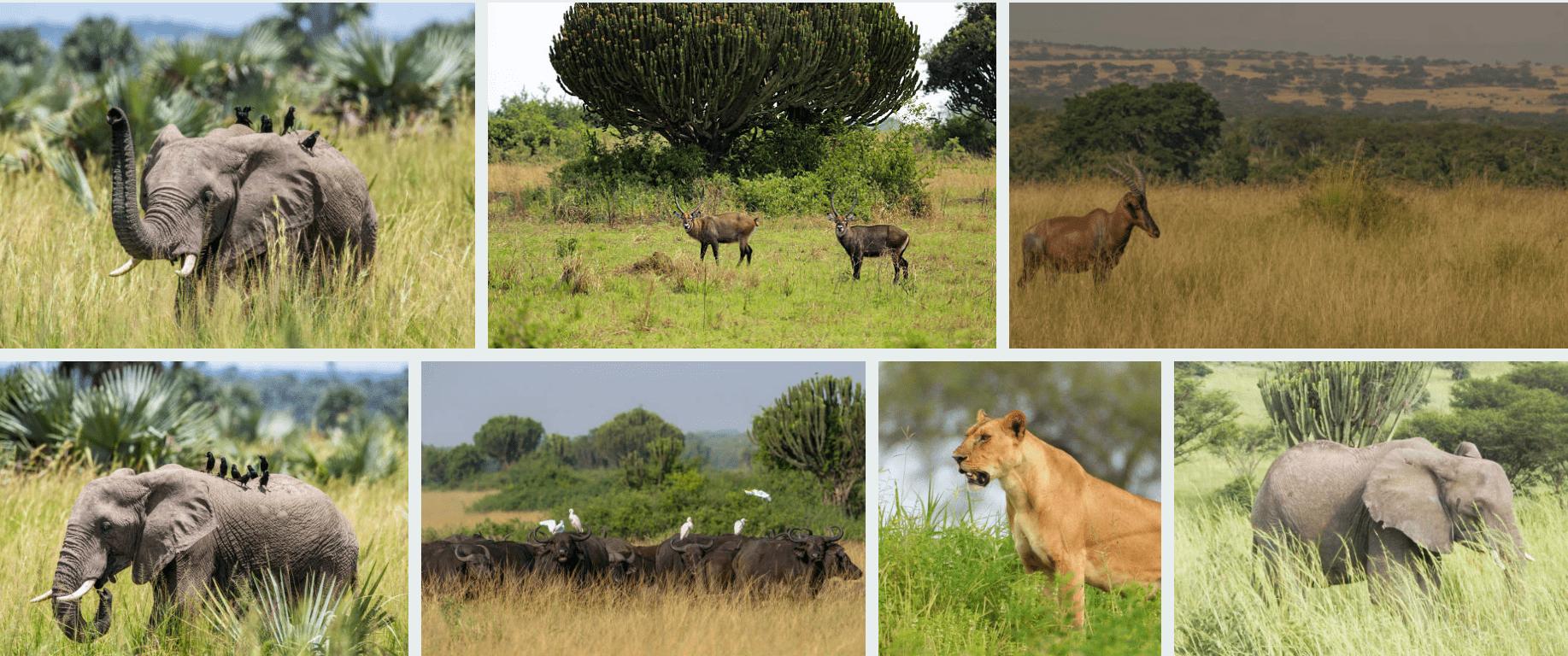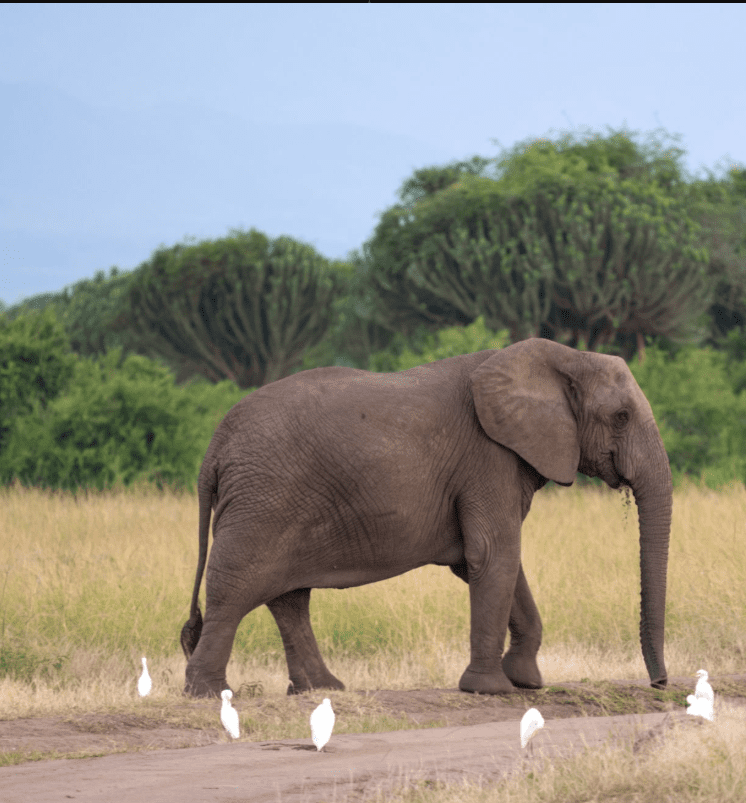Queen Elizabeth National Park Wildlife Guide: A Journey into the Heart of Africa’s Wild Majesty
Nestled in the southwestern region of Uganda, Queen Elizabeth National Park stands as one of Africa’s most magnificent wildlife sanctuaries. Spanning nearly 2,000 square kilometers, this biodiverse paradise is a testament to nature’s grandeur, offering an unforgettable experience for adventurers, conservationists, and dreamers alike. Whether you’re a seasoned traveler or a first-time safari-goer, exploring Queen Elizabeth National Park is more than just a trip—it’s a transformative encounter with the wild.
This Queen Elizabeth National Park Wildlife Guide is not just a manual for spotting lions or tracking elephants; it’s an inspirational ode to the resilience of nature and the profound lessons it teaches us about life, survival, and harmony.
The Untamed Beauty of Queen Elizabeth National Park

From the moment you set foot in Queen Elizabeth National Park, you are greeted by an overwhelming sense of awe. The park’s landscapes are a breathtaking mosaic of sprawling savannas, dense forests, sparkling crater lakes, and the meandering Kazinga Channel. Each ecosystem thrives with life, painting a picture of nature’s perfect balance.
1. The Big Game: Kings and Queens of the Wilderness
No visit to Queen Elizabeth National Park is complete without encountering its iconic wildlife. The park is home to the famous Tree-Climbing Lions of Ishasha, a rare phenomenon where lions lounge on fig trees like oversized housecats. Watching these majestic predators defy conventional behavior reminds us that even the fiercest creatures can adapt and thrive in unexpected ways.
Beyond lions, the park boasts:
Elephants – Gentle giants whose wisdom and familial bonds are a lesson in loyalty.
Buffaloes – Formidable herds that move with unity, embodying strength in numbers.
Leopards – Elusive and mysterious, teaching us patience and the beauty of solitude.
2. The Kazinga Channel: A Lifeline of Biodiversity
The 32-kilometer Kazinga Channel, connecting Lake George to Lake Edward, is the park’s aquatic heartbeat. A boat cruise here is a front-row seat to one of Africa’s greatest wildlife spectacles:
Hippos wallowing in pods, their playful grunts echoing across the water.
Nile Crocodiles basking on the banks, ancient sentinels of time.
Thousands of Birds – from vibrant kingfishers to majestic fish eagles – turning the sky into a living canvas.
This thriving ecosystem is a reminder that life flourishes where resources are shared, and boundaries between species blur in harmony.
3. The Kyambura Gorge: Where Wilderness Meets Wisdom
Dubbed the “Valley of Apes,” Kyambura Gorge is a lush Eden where chimpanzees swing through the treetops. Tracking these intelligent primates is a humbling experience—their social structures, problem-solving skills, and emotional depth mirror our own. They remind us that intelligence is not exclusive to humans and that every creature has a role in nature’s grand design.
Lessons from the Wild: What Queen Elizabeth National Park Teaches Us
Beyond its scenic beauty and wildlife, Queen Elizabeth National Park is a classroom without walls. Here are the profound life lessons it imparts:
1. Adapt or Perish: The Resilience of Nature
The park’s ecosystems have endured poaching, habitat loss, and climate fluctuations. Yet, life persists. The tree-climbing lions adapted to avoid ground insects; elephants learned new migration routes. Nature’s resilience teaches us that survival isn’t about resisting change but embracing it.
2. Unity in Diversity: The Symphony of Coexistence
In the wild, predators and prey share the same land. Lions, hyenas, and antelopes all depend on the same water sources. There’s a delicate balance—a reminder that the world thrives when diversity is respected, not feared.
3. The Power of Stillness: Learning from the Leopard
Unlike the boisterous lions, leopards are solitary and patient. They remind us that success doesn’t always come from constant movement—sometimes, it’s the quiet, strategic moments that lead to greatness.
4. Conservation: Our Shared Responsibility
Queen Elizabeth National Park is a success story of conservation. From community-led anti-poaching efforts to sustainable tourism, the park shows that humans and wildlife can thrive together. It challenges us to ask: What legacy are we leaving for future generations?
How to Experience Queen Elizabeth National Park Responsibly
To ensure this wilderness remains untouched for years to come, here’s how you can visit responsibly:
Choose Eco-Friendly Lodges – Support accommodations that prioritize sustainability.
Respect Wildlife Distances – Use binoculars and zoom lenses instead of approaching animals.
Engage with Local Communities – Many lodges and tours support nearby villages, ensuring tourism benefits everyone.
A Call to Adventure and Reflection
Queen Elizabeth National Park is more than a destination—it’s a mirror reflecting the raw, untamed essence of life. It challenges us to see beyond our urban confines and reconnect with the earth’s primal rhythms.
As you stand on the savanna at sunset, watching elephants move like shadows against the golden light, you’ll realize: this is where you truly belong. Not as conquerors of nature, but as humble witnesses to its majesty.
So pack your bags, open your heart, and let National Park guide you into the wild—where every rustle in the grass, every distant roar, and every soaring bird is a whisper of life’s enduring magic.
The wilderness is calling. Will you answer?

